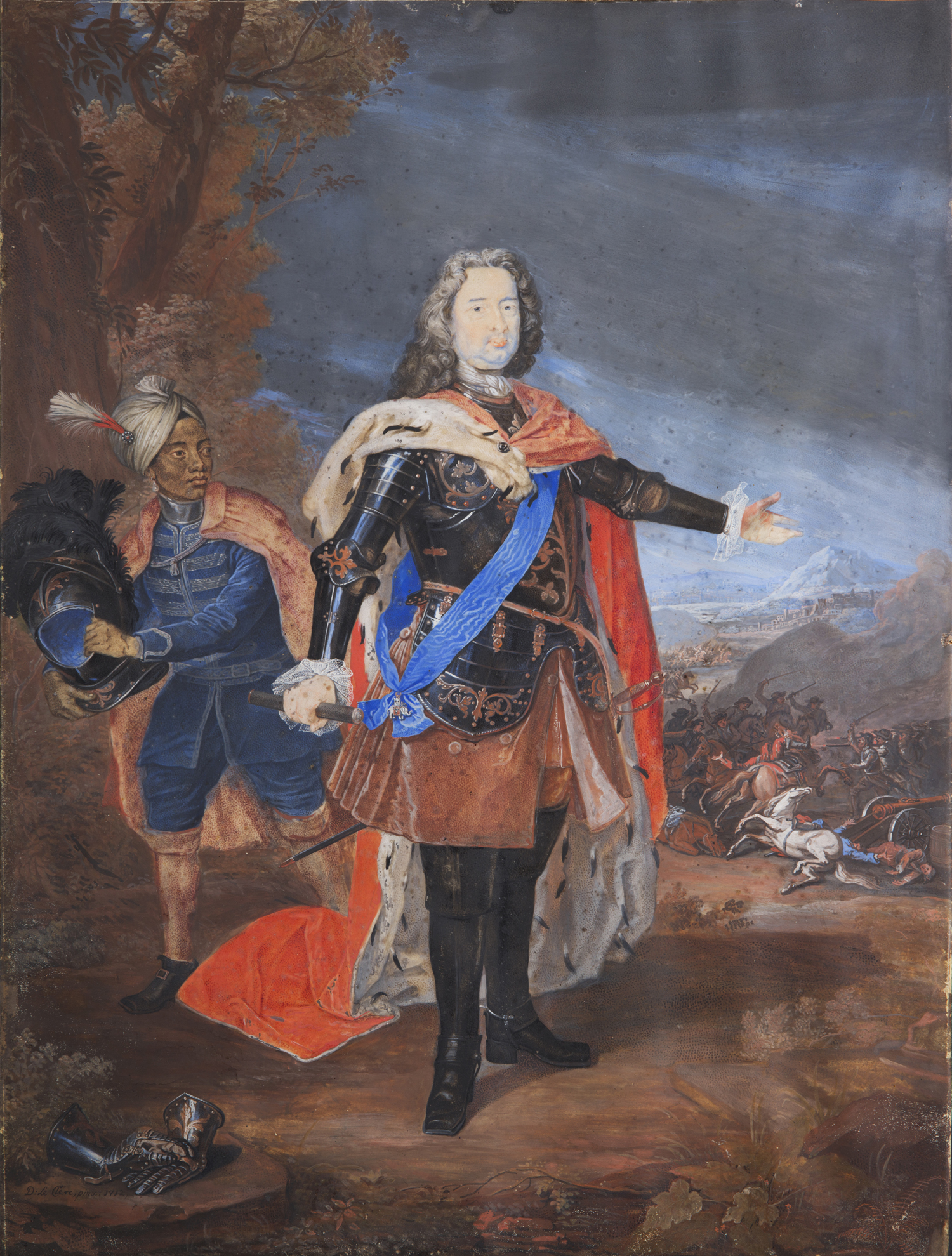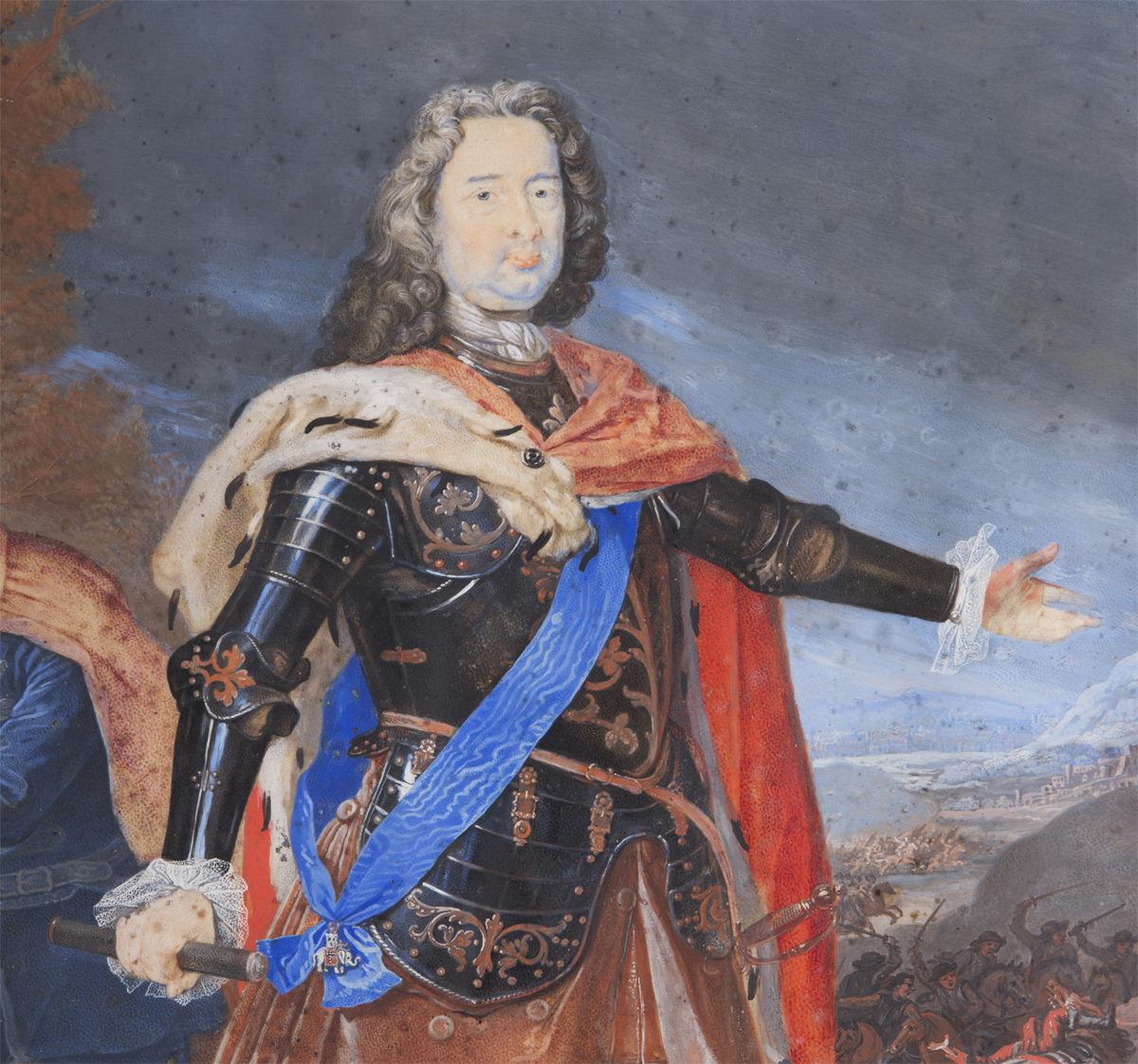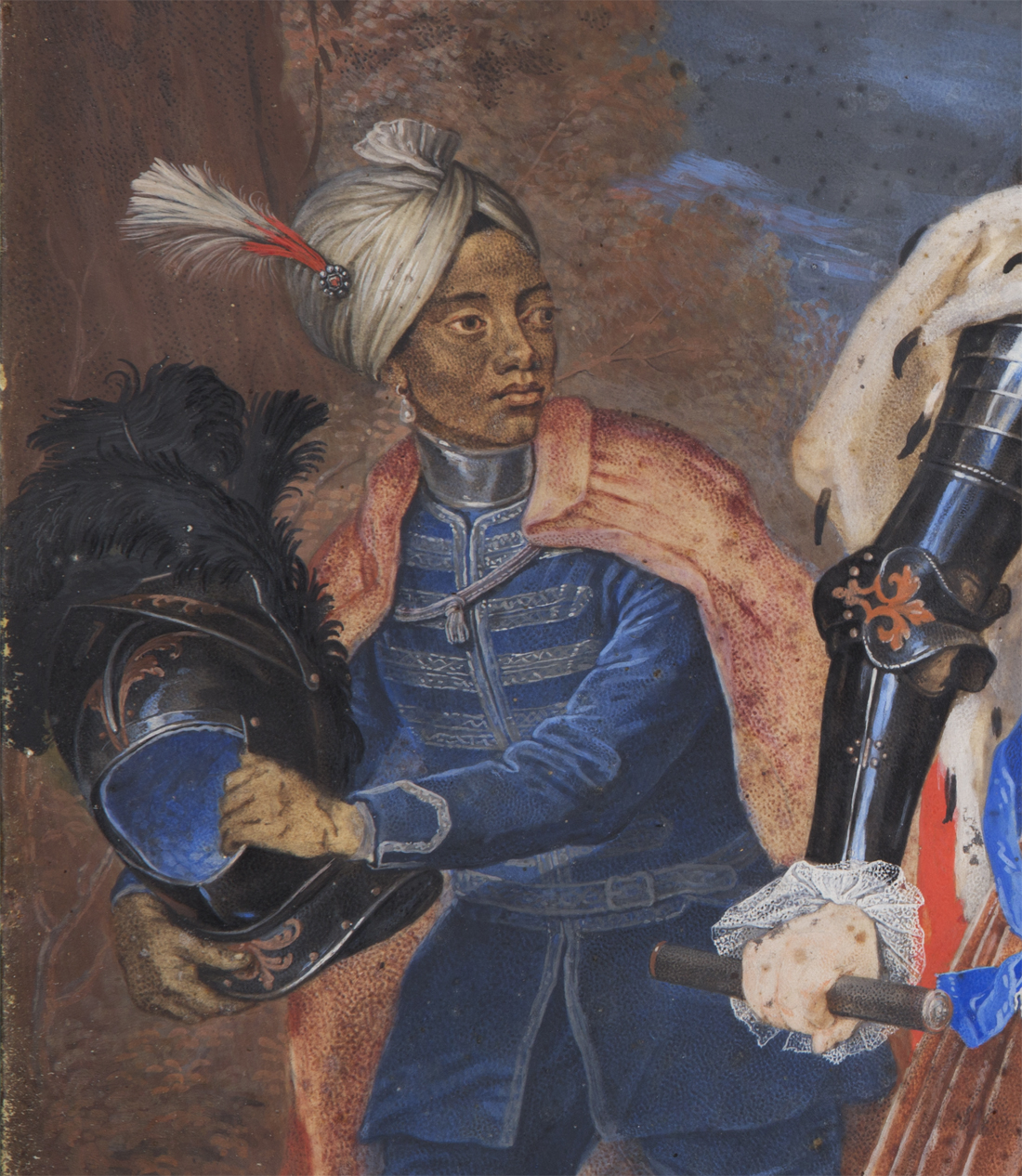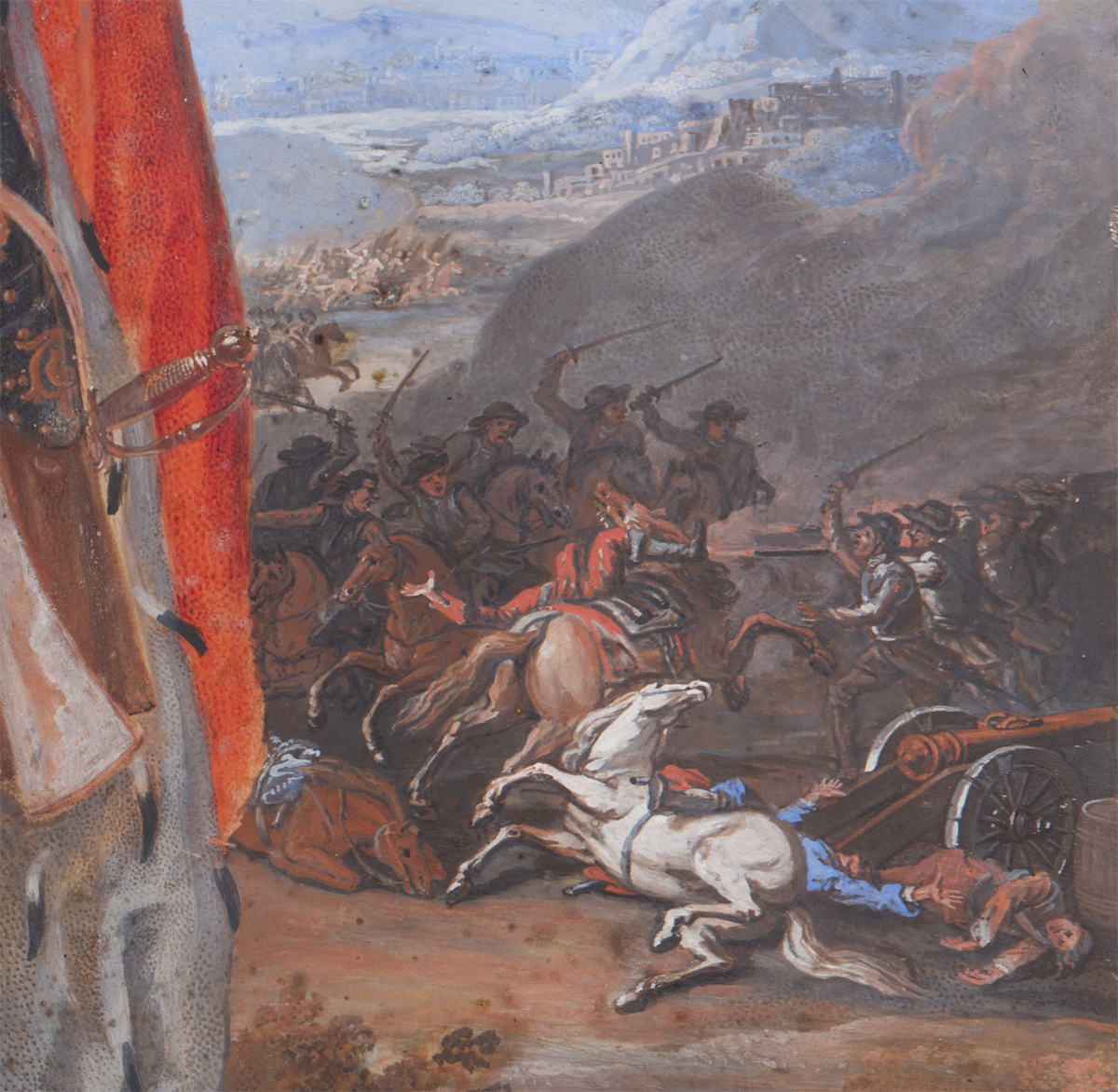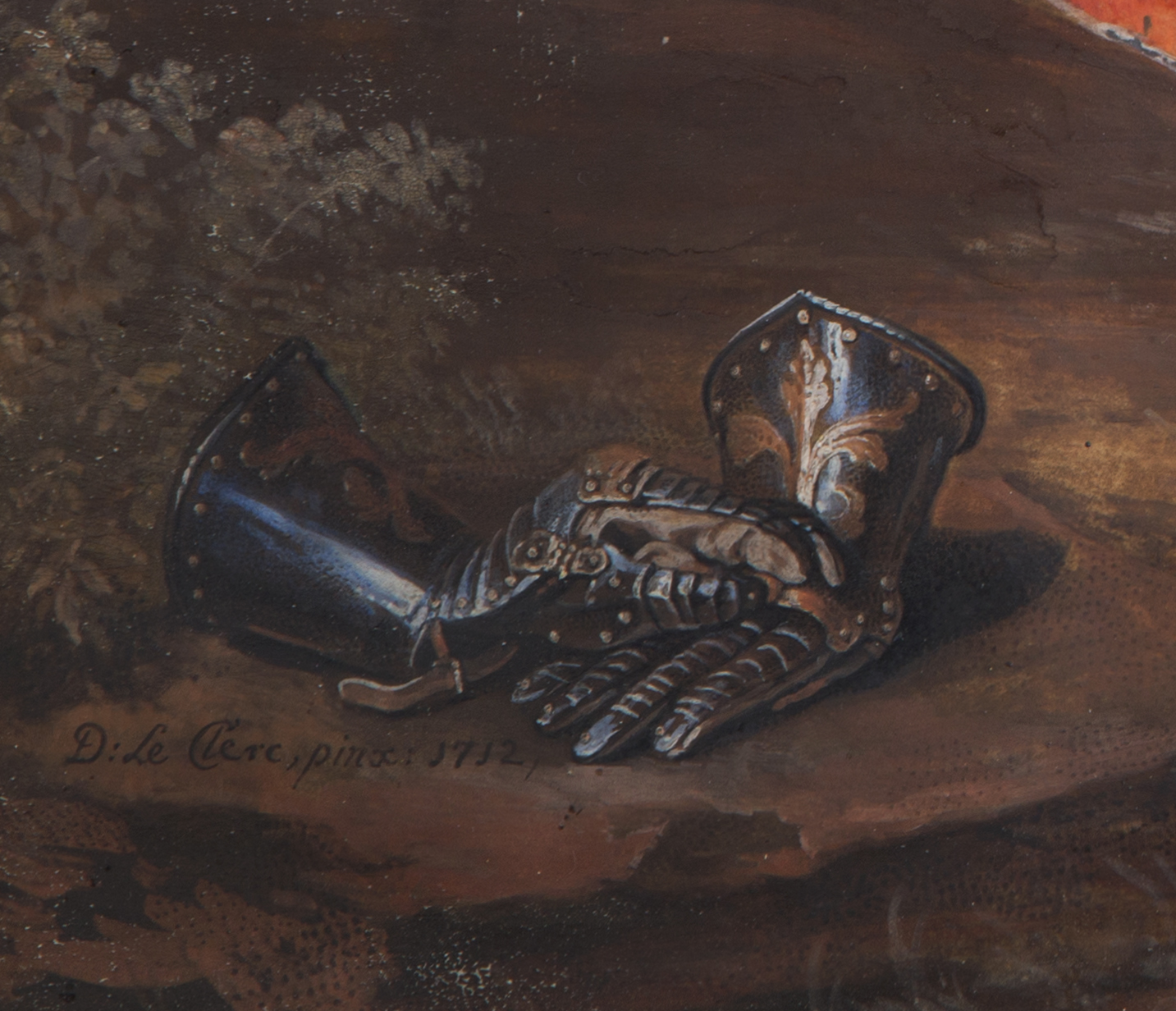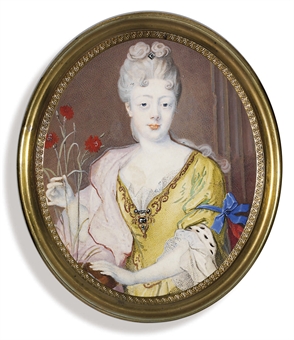DAVID LE CLERC (Bern 1679 – 1738 Frankfurt am Main)
David Le Clerc (Bern 1679 – 1738 Frankfurt am Main)
Portrait of Landgrave Karl von Hessen-Kassel (1654–1730) on the Battlefield, attended by a black page
Watercolour and bodycolour on vellum, laid down on panel, 567 x 420 mm (22.3 x 16.5 inch)
Signed and dated ‘D: Le Clerc, pinx: 1712’ (lower left)
Provenance
Private collection, Germany
***
David Le Clerc was born in Bern, Switzerland, in 1679, the son of the French engraver Gabriel Le Clerc, and Marie Wagnière of Lausanne.1 Le Clerc was taught in Bern by Joseph Werner (1637–1710), whose refined miniatures were celebrated among the courts of Europe, in particular at that of Louis XIV. Werner’s influence proved seminal for Le Clerc’s development. He moved to Frankfurt in 1698 to work for the courts of the princes of Hessen-Kassel and Hessen-Darmstadt. Landgrave Karl von Hessen-Kassel awarded him a stipend to study in Paris and London in 1699. After his return in Frankfurt, he was given an annual income of 220 Reichstaler, double the usual amount of courtiers in his position, which shows the appreciation in which his works were held by the court. David’s son was the draughtsman and miniaturist Jakob Friedrich Le Clerc (1717–1768), court painter to the Duke of Pfalz-Zweibrücken.
Karl von Hessen-Kassel was the son of Landgrave Wilhelm VI von Hessen-Kassel and Hedwig Sophie von Brandenburg.2 He reigned as Landgrave from 1670 to his death in 1730. He was succeeded by his son, Friedrich I, who had been King of Sweden since 1720. A portrait of the Landgrave with his extended family by Philip van Dijk of 1725 is preserved in the Museum Schloss Wilhelmshöhe, Kassel.3 The Landgrave assembled and commanded a large and powerful standing army which actively participated in the Nine Years’ War (1688–1697) and the War of the Spanish Succession (1701–1713), supporting the French coalition with an army of 8000 men. Because of his political talents, his territories recovered faster from the disastrous effects of the Thirty Years’ War (1618–1648) than elsewhere in Germany. Karl's daughter Marie Louise married Johan Willem Friso of Orange, later Stadtholder Willem IV of the United Provinces.
Karl was a passionate patron of the arts. From 1699 to 1700 he made a Grand Tour to Italy, and added significantly to the art collections of his family. At the outset of his reign he embarked on renovating the Residenz Schloss in Kassel, and he added two elaborate gardens, the Karlsberg and the Karlsaue, where an Orangerie was built. Under his patronage an academy was further founded in Kassel by Leibnitz in 1710, the Collegium Carolinum.
Le Clerc has depicted the Landgrave as a military commander, with a battle raging in the background. He is attended by a Moorish page. Firmly clutching a commander’s baton in his right hand, the Prince is shown wearing elaborately decorated armour and an ermine-lined cloak. From a blue silk sash hangs the Order of the Elephant, the highest order awarded by the Kings of Denmark.
This is one of Le Clerc’s most ambitious works in this medium. Normally he worked at smaller size, such as his refined miniature portrait of Princess Teresa Kunegunde Sobieski (1676–1730) of 1708, daughter of the Polish King John III Sobieski, and wife of Maximilian II Emanuel, Elector of Bavaria (see fig.).4 A nearly identical portrait of the Landgrave was described in an inventory of his possessions in 1730 and is still in Kassel.5 The Kassel replica is dated 1714, two years later than our work, which is likely to have been the prime version.
SOLD
1. For the artist, see: U. Thieme and F. Becker (eds.), Allgemeines Lexikon …, vol. XXII, Leipzig 1928, p. 521.
2. For the Landgrave, see: Hans Philippi, Landgraf Karl von Hessen-Kassel. Ein deutscher Fürst der Barockzeit (Veröffentlichungen der Historischen Kommission für Hessen, 34), Marburg 1976.
3. Oil on canvas, 95 x 134 cm; inv. no GK 327; Bernhard Schnackenburg, Gemäldegalerie alte Meister: Gesamtkatalog, Kassel 1996, vol. I, p. 113, no. GK 327, vol. II, pl. 229.
4. Miniature on parchment, 98 mm high; Christie’s, 10 June 2008, lot 141, repr.; T.H. Colding, Aspects of Miniature painting, Copenhagen 1953, pp. 140, 205, fig. 143.
5. Miniature on vellum, 571 x 415 mm; inv. no. GS 27521. I am grateful to Dr Christiane Lukatis for providing this information and for sending me a photograph of the work. Thieme and Becker described the work in their lexicon in 1928: ‘Von den im Casseler Kunsthausinventar 1730 aufgef. Porträts u. “ovidischen Malereien” haben sich erhalten das Bildnis des Landgrafen Karl in Panzer u. Hermelin mit seinem Leibmohren, 55 : 40 cm, in leuchtenden, kontrastreichen Aquarellfarben, sozusagen eine riesige Miniatur (bez. D le Clerc pinx. 1714)’ (‘Of the portraits and “Ovidian paintings” listed in the 1730 inventory of the Kassel art collections, survived have the portrait of the Landgrave Karl in armour and ermine with his personal Moor, 55 : 40 cm, in bright watercolours, rich in contrast, so to say a huge miniature (signed D le Clerc pinx. 1714’), Thieme and Becker, loc. cit.
